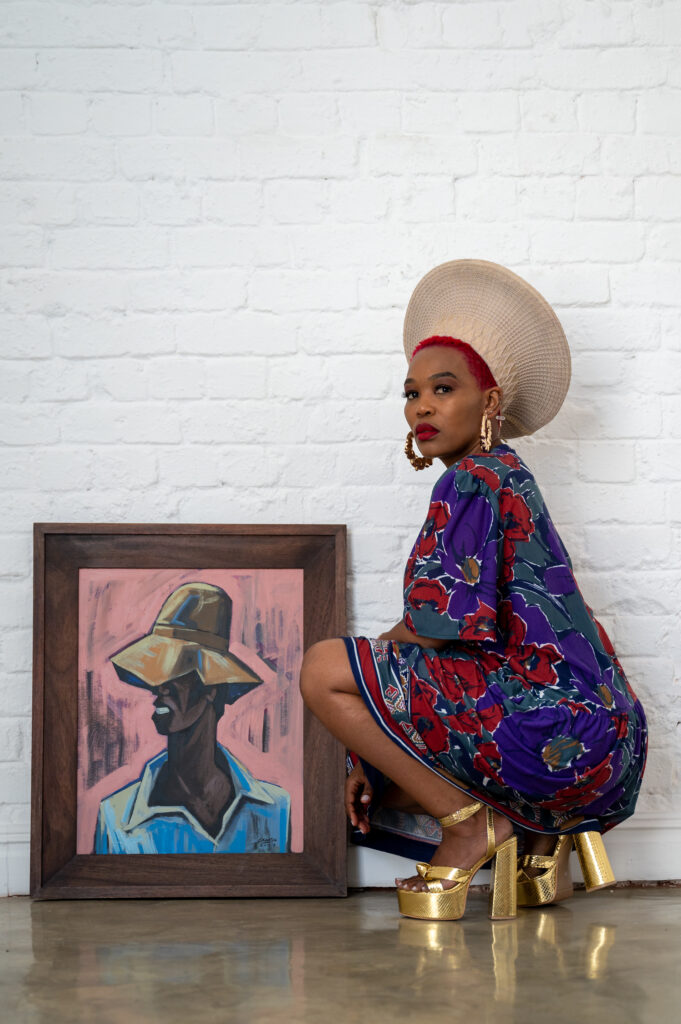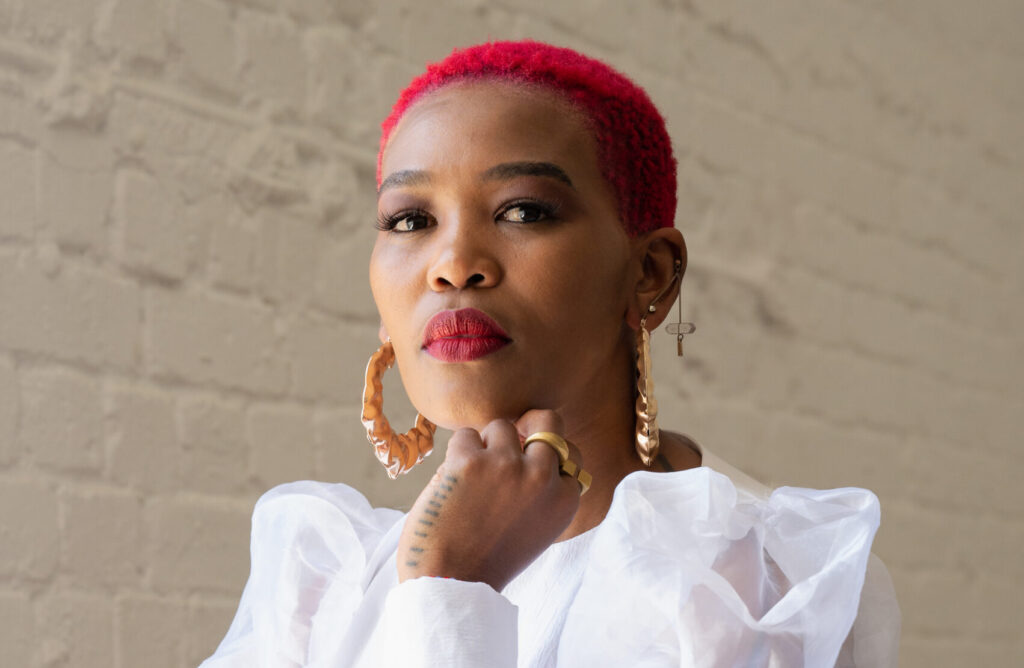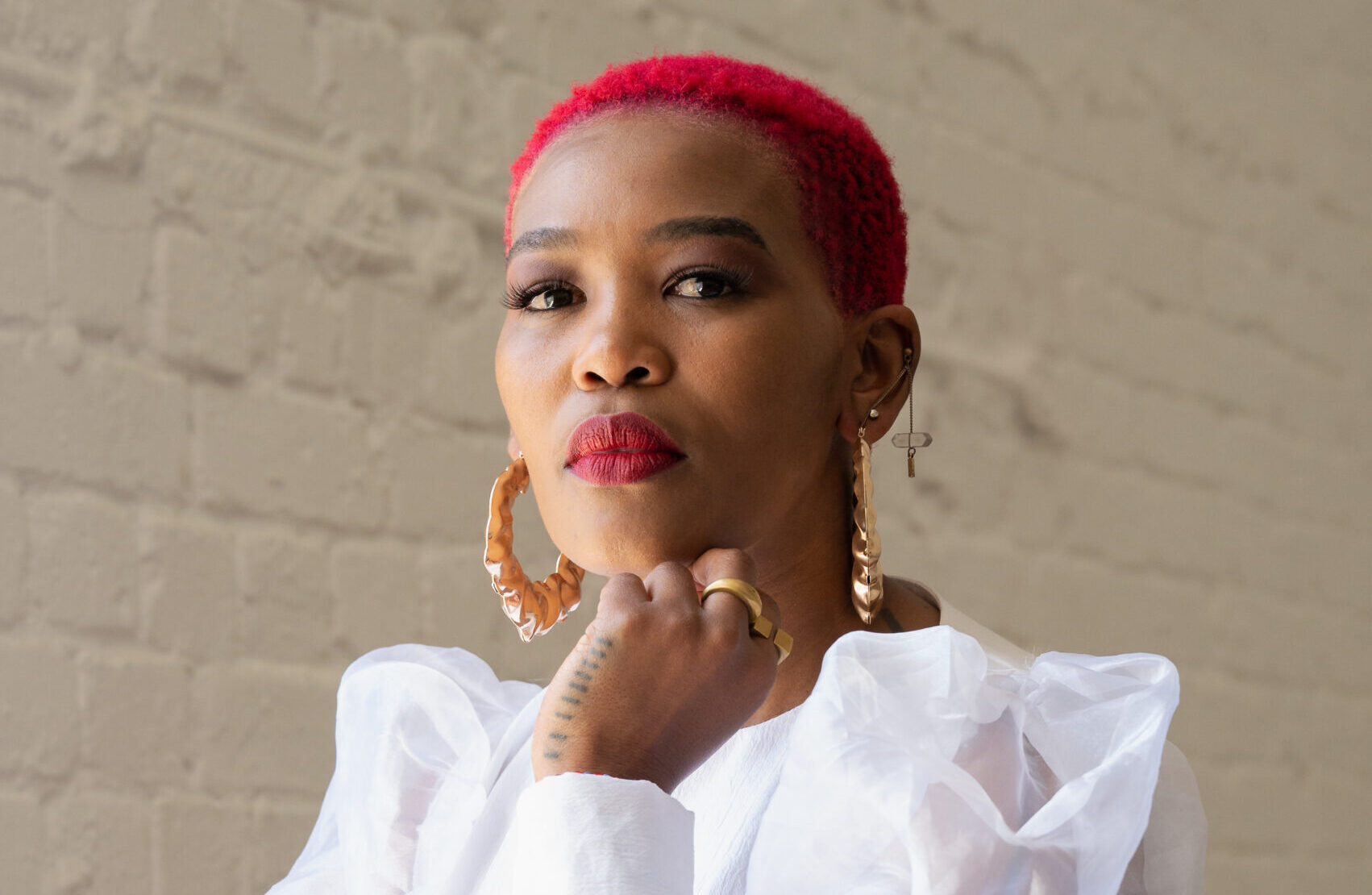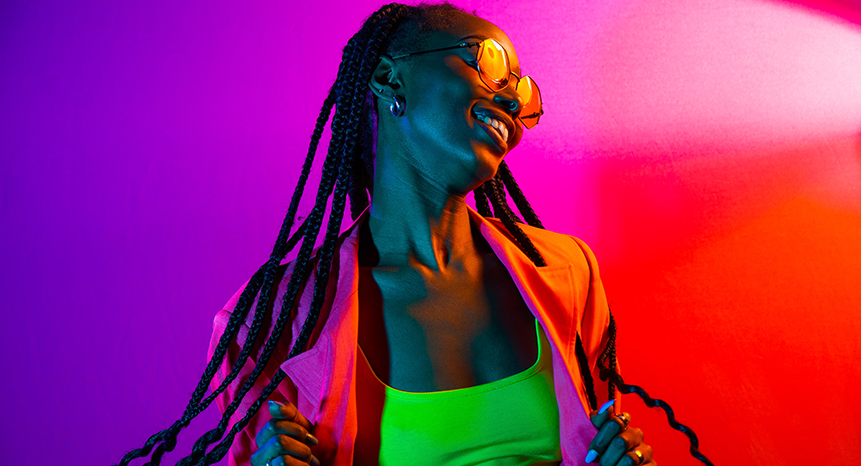10and5 caught up with Khanyisile Mbongwa, the founding Curator of the Stellenbosch Triennale, during a rare moment of calm just before the Triennale opens its doors.
Khanyisile is no stranger to breaking boundaries and reimagining possibilities. Based in Cape Town, she has carved a unique path as an independent curator, award-winning artist, and sociologist. Her approach, which she describes as “curing and care,” blends creativity with critical engagement to create spaces for emancipation, joy, and play.
From curating international exhibitions like the Liverpool Biennial 2023 uMoya: The Sacred Return of Lost Things to her groundbreaking work as Chief Curator of the 2020 Stellenbosch Triennale, Mbongwa’s projects break traditional norms and highlight underrepresented voices. Her work crosses borders and genres, fearlessly exploring history, place, and how art shapes our shared future.
In this interview, Mbongwa opens up about her journey into curating, her inspirations, and the philosophies that underpin her practice. From grappling with institutional challenges to dreaming of new worlds, her reflections provide a powerful insight into what it takes to navigate—and transform—the art world.

10and5: What inspired you to pursue a career in curating, and what has your journey been like so far?
Khanyisile: Curiosity and collaboration – being deeply curious about the world we are making and wanting to think alongside others. Also, the desire to make space for the things that concern my being as part of collective consciousness. My journey has been challenging and generous – some spaces I have entered have been so heavily burdened with violent histories that resurface in how the space is governed finding myself having to negotiate institutional and systemic violence – I have also encountered spaces that have opened themselves up, offered themselves as spaces of possibilities. I have learned so much about myself from all projects I have been involved in – from studio visits with artists it’s like another layer of the world has been revealed, entering museums vaults or archives always feels like getting lost in time and space then I have to figure out a pathway to this realm, sitting in boardrooms with different stakeholders having to hold the curatorial vision alongside budgets, public reach and reports. I curate to imagine and dream of a world, it’s how I grapple with the world I live in, that I have brought my 5yr old universe in…
My journey has been challenging and generous – some spaces I have entered have been so heavily burdened with violent histories that resurface in how the space is governed finding myself having to negotiate institutional and systemic violence…
10and5: What sets your approach to curating apart from others in the field?
Khanyisile: Lol, I feel like this is a trick question… I come from a sociology background rather from an art history perspective. My practice really started with wanting to make sense of the township and its life, I wanted to language our experiences and theorize myself into existence in a world that relegates me into a space of invisibility or hyper-visibility. I engage with curating as an embodied practice, for instance when I infer on indigenous or ancestral knowledges it’s a way of tracing memory – it is remembering that which has been lost or forgotten. I work with curating as a way to formulate emancipatory practices that allows us to imagine ourselves into existence.
10and5: Can you walk us through your creative process when curating an exhibition or event?
Khanyisile: I walk into any project/space as an unknowing person, which opens me up to enact ancestral and forensic listening. I ask myself, why has this place called me here, what does it want to tell and show me, where is it asking me to go, how will it take me there and how will it return me, what does it want me to share with the broader public? These questions propel me to listening… this is where I begin, the theme emerges from a series of listening sessions, from there all the other parts reveal themselves and how they need to be approached. This is also dependent on the scope of the project.
The concept is inspired by our capacity to stay in the rhythm of our breath in light of how for instance COVID-19 confronted our breathing on a global scale
10and5: The theme of this year’s Stellenbosch Triennale is Ba’zinzile: A Rehearsal For Breathing. What inspired this concept, and what do you hope audiences will take away from it?
Khanyisile: It is said that our creator breathed life into us, when a child is born we all wait for that first cry to signify breathing… Breathing is sacred! The concept is inspired by our capacity to stay in the rhythm of our breath in light of how for instance COVID-19 confronted our breathing on a global scale and the continued violences in places such as Congo and Palestine (too many list them all), natural disasters in the form of floods, fires, landslides we fight for the sanctity of our breaths. It’s an attempt at attending to our breath and breathlessness historically and in our present – and what these fracture lines can reveal to us about how we can imagine our shared futures. Also engaging with exhibition/festival making as a rehearsal space for the things we desire in the real world. What I’d like audiences to take away from this encounter is this question: ‘What would happen if you defined the problem big enough to implicate yourself?’.
10and5: What excites you the most about the upcoming Stellenbosch Triennale? Are there any particular works or moments you can’t wait for people to experience?`
Khanyisile: I’m excited about the entire program, all the different sites have something I’m curious about cause I’m working with some of the most talented and visionary artists globally – this alone makes me super excited. Im particularly excited about our Talks programme, the themes we’re exploring and the speaker line up. Also Embodied works, where we’ll get to witness public interventions that centralise the physical body as the site of engagement and the Bioscope program where we are premiering a few short film works.

10and5: Why do you think you’ve gained recognition on the international stage, being noticed by institutions abroad and invited to curate exhibitions overseas? What advice would you give to others aspiring to reach that level?
Khanyisile: Hmm, I think it’s because my curatorial practice is formulated on the two pillars of care and cure built on ancestral foundations in the form of indigenous knowledge wisdom. This informs all my decisions and how I engage in any project. My advice would be build up the language to define your practice – this allows you to have a framework for how to situate/land/position/locate yourself and your practice. It’s also a way to create and enter discourse…
10and5: What advice would you give to young people who dream of becoming curators or working in the art world?
Khanyisile: Be curious, curiosity always allows you space to dream, imagine, notice things others miss, it opens you up to things beyond your own perception. Always respect the installation / production team – they are the core of exhibition making. Don’t be afraid to start no matter how small and to be hands on – I use to curate one day self-funded interventions in To Let empty buildings; I used to install exhibitions alongside artists with no installation or technical team. I’d be there on the day of the opening in my dress and heels on a ladder drilling a nail in the wall!
10and5: What do you see as the biggest challenges and opportunities for South African art and artists over the next decade?
Khanyisile: We are grappling with an environmental crisis and political shifts which naturally impacts the freedom of our expression and our livelihood. The development of AI presents us with a challenge and opportunity all depending on how we engage with it and the role we allow AI to hold. Locally, we lack residencies that can assist us in developing and evolving our skills through experimentation and spaces to theorise. There are more young professionals opening up galleries and setting up spaces – this provides us with opportunities for collaborations. In conversations I been having with artists, they talk about how they have hit the market ceiling here at home and how saturated the market is – so there’s work to be done.
10and5: Do you have any mentors or role models in the art world who have influenced your curatorial approach?
Khanyisile: There are people that I have crushes on because of how they put their practices together like Prof. Jay Pather, whom I met in 2007 and who’s practice I’ve been following since. Prof. Siphokazi Magadla‘s book, Guerrillas and Combative Mothers: Women and the Armed Struggle in South Africa inspired me so much about how to hold the past and write history otherwise. Also Chimurenga as an archival and knowledge producing space, Fatos Üstek who I encountered a few years ago and our conversations made me more curious about her approaches… although these people have not influenced my curatorial approach but they definitely affirmed and challenge how and why I do the work that I do.
There are people that I have crushes on because of how they put their practices together like Prof. Jay Pather
10and5: What is one artwork, artist, or exhibition that profoundly shaped your perspective on art?
Khanyisile: In 2013 while doing my honours degree in curating at UCT I attended a graduation show at Michaelis Gallery for Buhlebezwe Siwani’s work titled Inzilo: ngihlala kwabafileyo. (Inzilo draws upon Siwani’s experiences as a sangoma or traditional healer. As a conduit between the lands of the living and the dead a sangoma is, Siwani maintains, “always an outsider in the real world.” From that liminal space, a medium cannot mourn). I had so many questions about what I witnessed and the space it was in – it’s the work that made me determined to theorise and language works done by Black people because the terms we often use in academia and the art world often thinks from a racialised space of whiteness. And also to safeguard the sacred in the artist I work with and most importantly to me on that day was Black Privacy, how it needs to be safeguarded.
10and5: How do you balance showcasing established artists with providing a platform for emerging voices in the Triennale?
Khanyisile: The way I have structured the Triennale is to hold this exactly. In The Current showcases artists whose practices are resolved in their framework that regardless of material or form one can identity their works. On The Cusp features artist young in practice sitting on the verge of something incredible in aesthetic, form, conceptual and might need the final push to fly. From The Vault focuses on museum practice and collections… in this way artists sit alongside each other reinforcing their relevance.
10and5: What role do you think art plays in addressing social, cultural, or political issues in South Africa today?
Khanyisile: The arts always play a pivotal role in reflecting back our society to us but it also creates a space for release, redemption, affirmation and imagining possibilities. Art is therapy, meditation, mourning, rest – it is medicine. Liyeza lephakathi.
10and5: What’s the most rewarding part of curating large-scale events like the Stellenbosch Triennale? And what’s the most challenging?
Khanyisile: You get to work with a budget to the most part that allows you to dream so big that you can invite artists into a space where you can truly hold their work and honour their practice. That you have a team that supports your vision and dreaming as we all work towards making it come to life. The challenge for me always is ensuring that my capacity to care can hold through any challenge the process encounters.
* To find out more about the Stellenbosch Triennial and where to get your tickets here.




